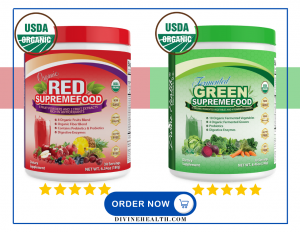Every day, your body is bombarded.
Whether you like it or not, engage in exercise or are sedentary, stay indoors or head out, free radicals are at work in your body. Against your body. We all encounter oxidative damage from free radicals on the cellular level. It damages cells, oxidizes cholesterol so that it forms plaques, and encourages disease.
Luckily, our bodies have a way to deal with it.
When you consume high-antioxidant foods and those that support your body’s own antioxidant synthesis, your body can fight back. It’s incredibly important that you do it.
But what foods should you consume? High-antioxidants foods mostly come from plants. Here are 10 of the best. And best of all, they are readily available, and most of them are relatively inexpensive.
Top 10 Everyday High-Antioxidant Foods
1.Coffee
You can start your day off with a cup full of antioxidants.
How?
Just start with coffee.
According to the FRAP assay (which is a well-accepted measurement of antioxidant content), coffee contains 2.7 mmol/per 100 grams (or just 3.5 ounces of liquid coffee) (1). If you drink a more regular 10-12 ounces, you’re getting whopping 8.1 mmol of antioxidants.
The main healthful component of coffee is a polyphenol chemical called Chlorogenic Acid (CGA). Chlorogenic acid is highly antioxidant and anti-inflammatory. Experts believe that CGA may be beneficial as an anti-diabetic, anti-carcinogenic, anti-inflammatory and anti-obesity agent (2).
Not a bad way to start the day, and doesn’t break the bank (especially when made at home).
2. Berries
- Blueberries have up to 9.2 mmol of antioxidants per 3.5 ounces
- Strawberries have 2.1mmol of antioxidants per 3.5 ounces
- Raspberries have 4 mmol of antioxidants per 3.5 ounces
- Cranberries are also very high in antioxidants, and a very inexpensive source if you buy during the Holidays and freeze for use during the year
Raspberries are specifically known to lower risks of cancer and heart disease. In fact, a lab study showed that antioxidants and other components in raspberries killed 90% of the stomach, colon, and breast cancer cells in the sample (6). And, a study review concluded that the anti-inflammatory and antioxidant properties of black raspberries may slow down and suppress the effects of a variety of cancers (7).
It’s for this reason that blueberries are used as ingredients in the Keto Zone Shakes! This allows Keto Zone eaters to consume berries and enjoy their health benefits. In addition, Divine Health Red Supremefood contains high-antioxidant berries.
Not only are they delicious, they truly benefit health and fight disease.
3. Avocados
Okay, these are exactly inexpensive.
However, avocados do double duty when it comes to antioxidants.
First, they contain a spectacular array of carotenoids including:
- beta-carotene
- alpha-carotene
- lutein
- neochrome
- neoxanthin
- chrysanthemaxanthin
- beta-cryptoxanthin
- zeaxanthin
What’s more, the fats in avocado actually increase the carotenoid absorption from other vegetables, by as much as 15 times (8)! Carotenoids directly support eye health and brain health (9). And, they are highly anti-inflammatory.
Next, avocados are the best fruit source of vitamin E, an essential vitamin that protects against many diseases and helps maintains overall health. Specifically, vitamin E is an antioxidant that supports brain, cardiovascular, and respiratory health.
Lastly, avocados are a good source of glutathione. This super-antioxidant is produced by our own cells and sometimes found in foods. It promotes cellular health, anti-aging, and overall good metabolism and cellular cleansing.
4. Green Tea
Green tea is known for its health benefits. It contains 1.5 mmol antioxidants per 100 gm (per 3.5 ounces prepared).
Green tea’s antioxidants and other healthful components have been shown to impact the body by:
- Reducing cholesterol plaques, free LDL cholesterol, and high blood pressure.
- Inhibiting the growth of cancer cells in lab studies. High consumption of the drink has been associated with a 90% reduced risk of breast cancer in women.
- Repairing and protecting cells, especially in the brain. In fact, in mice induced with Alzheimer’s and Parkinson’s Disease, it helped to protect brain cells from dying, as well as ‘rescuing’ already damaged neurons in the brain, a phenomenon called neurorescue or neurorestoration.
- Providing antibacterial properties that promote oral health.
- Exhibiting protective effects on eye cels for up to 20 hours after consumption. This has led many experts to believe it may have a role in reducing diseases of the eye and glaucoma.
- Helping our bodies oxidize and burn fat. Multiple studies have shown an increase in metabolic rates, weight loss, decreased waistline and fat loss with consistent green tea ingestion.
5. Beets & Red Cabbage
Beets are chock-full of antioxidants. They contain phytochemical antioxidants called betanins. Betanins are the primary nutrient responsible for that beautiful red hue. Betanins contribute to three main disease-fighting actions (10, 11). Betanins:
- Fight free radicals and oxidative
- Reduce Inflammation
- Support the detoxification of the cells
- Like red cabbage and other superfoods, beets also support the production and work of glutathione, a powerful antioxidant our cells make to fight damaging substances.
6. Spices: Cinnamon, Ginger, Cloves, Turmeric, Chili, Garlic
Most spices are highly antioxidant.
In fact, in a review of FRAP scores of spices and herbs, 27 single products were in the range 100 to 465 mmol/100 grams (1)! This means that ounce to ounce, they are some of the concentrated sources of antioxidants available.
But of course, you don’t likely eat the same volume of cinnamon as you do fruits, vegetables and drinks. But even so, a small amount of spice goes a long way towards fighting free radicals and oxidative stress.
To add more antioxidants from spices, try adding ginger, cloves, turmeric, garlic, and cinnamon to your diet.
And this time of year, add our delicious pumpkin spice mix! A little spice goes a long way, and pound for pound, deliver a lot for their cost.
7. Orange Foods: Butternut Squash, Carrots & Sweet Potatoes
With most orange vegetables, it’s all about the carotenoid. Butternut squash, carrots, and sweet potatoes provide carotene antioxidants including alpha-carotene, beta-carotene, beta-cryptoxanthin, lutein, and zeaxanthin.
These antioxidants will work together to fight free radicals, reduce the risk of cancer, promote heart health and reduce plaque formations, and preserve eye health (12).
You’ll seldom find a cheaper high-antioxidant food than a carrot.
8. Pecans
Although pecans are expensive, they are a great splurge especially for Autumn recipes and the upcoming Holidays.
Pecans are a nutritious nut, high in antioxidants. In fact, they contain 10.6 mmol of antioxidants per 3.5 ounces (100 grams) (1), which is higher than Kale (whoa) and most other nuts. They have been shown to effectively raise blood antioxidant levels (13).
And best of all, these antioxidants work to provide tangible health benefits. They reduced oxidized blood LDL, which reduces artery plaques (14).
Looking for ways to add pecans to your diet? Try these Keto Zone Pecan Tartlets.
9. Spirulina
We need antioxidant and anti-inflammatory foods since our bodies are constantly bombarded with free radicals, oxidative damage, and inflammation each day.
Luckily, spirulina fits the bill.
Spirulina contains an active component called phycocyanin, which is an antioxidant that fights free radicals and decreases inflammatory signaling molecules in the body (15).
Spirulina is convincingly great for you. The hardest part is taking it in a form that’s easy and tastes good. Try Divine Health’s Fermented Green Supremefood.
10. Cacao and Dark Chocolate
If you like adding raw cacao to recipes or eating high-cacao dark chocolate, you’re consuming high-antioxidant foods disguises as dessert already.
Believe it or not, cacao has more than 300 different antioxidant chemical compounds and more than 20 times the antioxidant power of blueberries. And while other foods antioxidants diminish with time, cacao has demonstrated stability in samples over 75 years old (16)!
What’s more, based on the FRAP analysis, dark chocolate (high-cacao such as 70%+) has up to 15 mmol of antioxidants per 3.5 ounces (100 grams). Again, this is more blueberries and raspberries.
Cacao provides many other health benefits as well, including stress reduction, reduced blood pressure, brain health, and more. If you want to learn about cacao’s effect on the body, check out these top 10 benefits.
Bottom Line
Free radicals bombard your body, from your head to your toes every day. But, there’s good news: You can eat high-antioxidant foods to increase your blood levels of antioxidants, and support your body’s production of glutathione to fight back. When you eat brightly colored plants, spices, and beverages such as coffee and tea, you consume antioxidants.
These antioxidants will work in your body to fight oxidative stress, reduced oxidized cholesterol, and improve overall health.










You didn’t mentioned Walnuts along with Pecans. I eat Walnuts every day
along withe dark chocolate.
What can people with oxalate issues do. I have had two surgeries to remove oxalate stones from my kidney. Many foods on this list I have been told by my nephrologist to avoid! 🙁